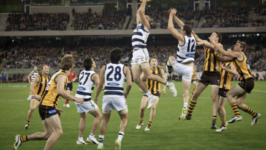Is It A Crime To Access or Possess an Intimate Images Without Consent in NSW?

Yesterday it was revealed that the AFL is investigating the distribution of nude photos and videos of at least 45 past and present players, that have been shared across social media.
Intimate images shared without a person’s consent are referred to as ‘revenge porn’ or ‘abuse based imagery’ and dealing with this imagery can carry serious criminal consequences.
Here is what you need to know.
Recording An Intimate Image Without Consent
It is an offence under section 91P of the Crimes Act 1900 to intentionally record an intimate image of another person without their consent or whilst being reckless to the fact that the other person is not consenting.
An ‘intimate image’ is defined as:
- An image of a person’s private parts, or a person engaged in a private act, in circumstances in which a reasonable person would reasonably expect to be afforded privacy, or
- An image that has been altered to appear to show a person’s private parts, or a person engaged in a private act, in circumstances in which a reasonable person would reasonably expect to be afforded privacy.
A ‘private act’ includes depictions of someone in a state of undress, using the toilet, showering, bathing, engaged in a sexual act or engaged in any other like activity.
The nude images of AFL players definitely constitute an ‘intimate image’.
This offence carries a maximum penalty of a fine of $11,000 and/or three years imprisonment.
Distributing An Intimate Image Without Consent
There are both State and Federal Offences relating to the distribution of an intimate image without consent – this including posting an image on social media or sharing in private messages.
Section 91Q of the Crimes Act 1900 (NSW) outlines an offence for anyone who intentionally distributes an intimate image of another person without their consent, or being reckless to the fact that the other person did not consent.
To “distribute” includes
- Sending, supplying, exhibiting, transmitting or communicating to another person; or
- Making available for viewing or access by another person.
Tis offence carries a maximum penalty of a fine of $11,000 and/or three years imprisonment.
Section 474.17 of the Criminal Code Act 1995 outlines the Federal offence of using a carriage service (such as the internet) to menace, harass or cause offence carries a maximum penalty of 3 years imprisonment.
The offence applies if a “reasonable person” would regard the conduct as “menacing, harassing or offensive”.
An aggravated version of the offence exists under section 474.17A if a person commits an offence under section 474.17 of the Act, and the offence involves the transmission, making available, publication, distribution, advertisement or promotion of private sexual material.
The phrase “private sexual material” refers to material that:
- Depicts a person who is, or appears to be, 18 years of age or older and who is engaged in, or appears to be engaged in, a sexual pose or sexual activity (whether or not in the presence of other persons); and does so in circumstances that reasonable persons would regard as giving rise to an expectation of privacy; or
- Material the dominant characteristic of which is the depiction of: a sexual organ or the anal region of a person who is, or appears to be, 18 years of age or older; or the breasts of a female person who is, or appears to be, 18 years of age or older where the depiction is in circumstances that reasonable persons would regard as giving rise to an expectation of privacy.
This offence carries a maximum penalty of 6 years imprisonment.
A special aggravated version of the offence also exists under section 474.17A, where the accused person has been repeatedly warned about their behaviour to the eSafety Commission. This carries a maximum penalty of 7 years imprisonment.
Is Accessing The Images An Offence?
Unlike other forms of abuse-based imagery, such as child exploitation material (or ‘child pornography’), there is no specific offence that applies to merely possessing or accessing an intimate image without consent.
However, the offences outlined above would apply in relation to the AFL nudes leak in circumstances where:
- A person shares a link to the intimate image,
- A person screenshots an intimate image and shares it with another, or
- A person posts about seeing the intimate image, as this could amount to “advertising” or “promoting” the images.
Everyone has a right to have their privacy respected, and the sharing of an intimate image without a person’s consent is an incredible violation of a person’s privacy.
Whilst you may be curious about the leaks, it is both morally abhorrent and legally risky to have any dealing with this imagery should you come across it.






